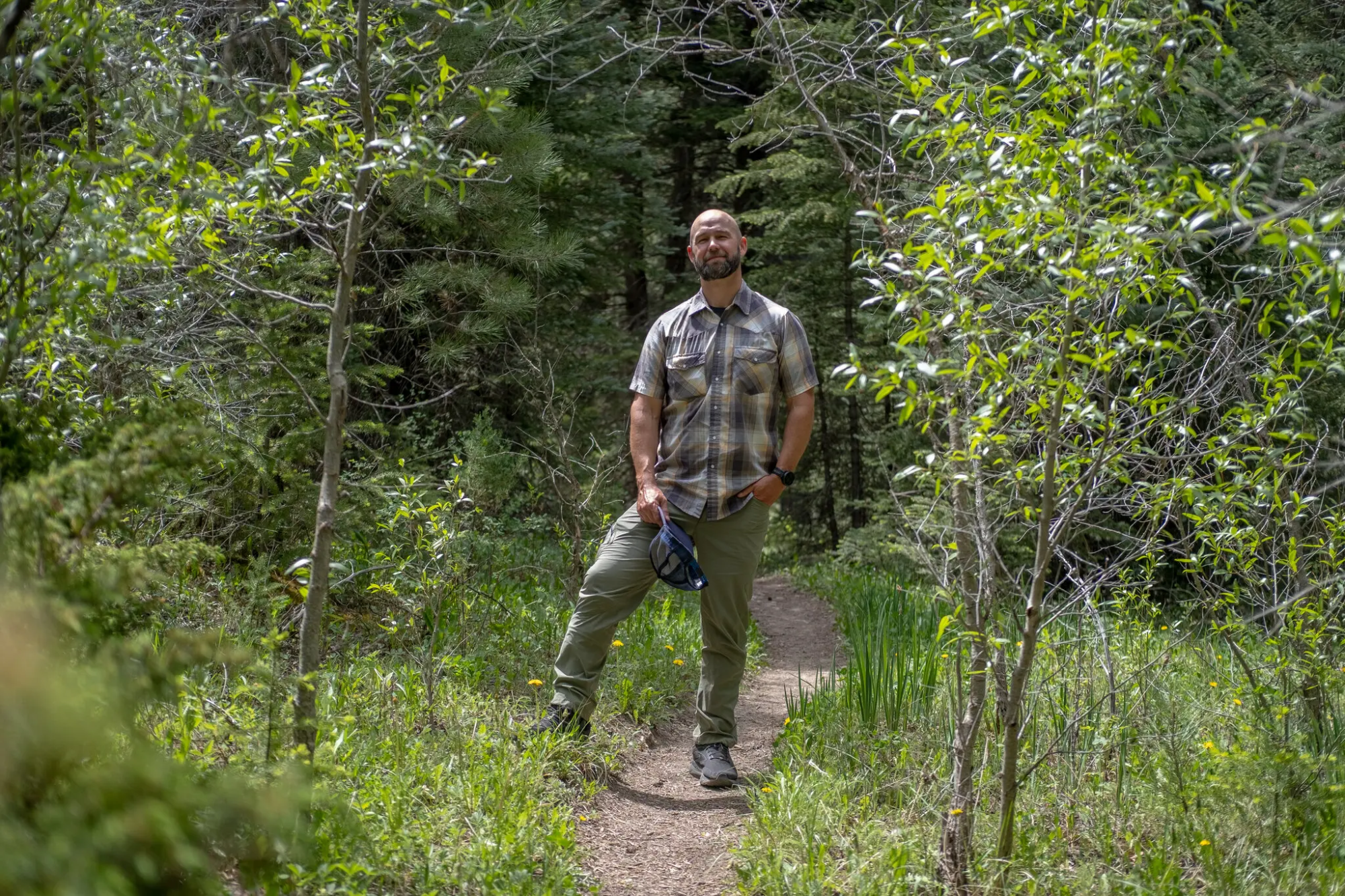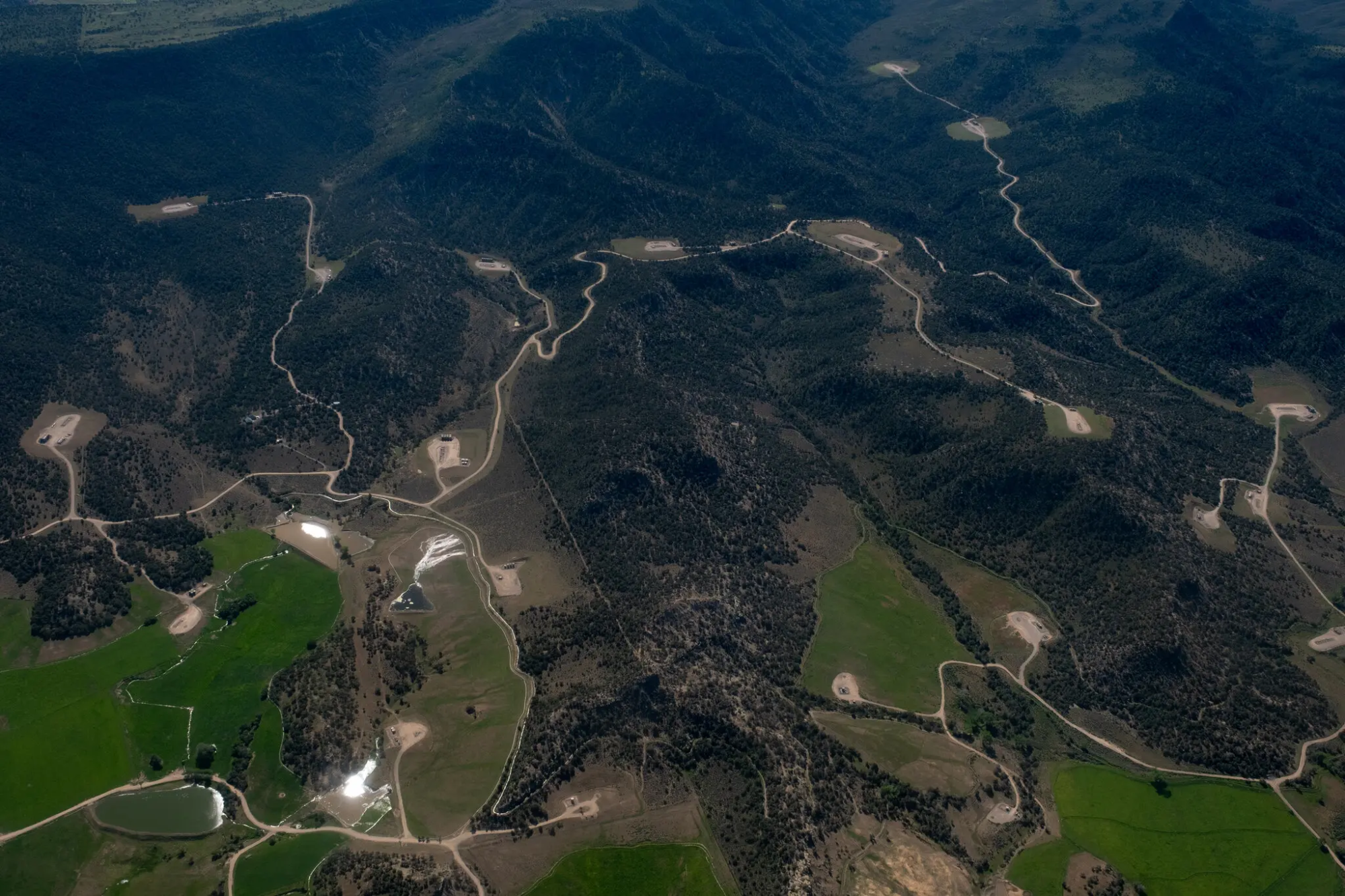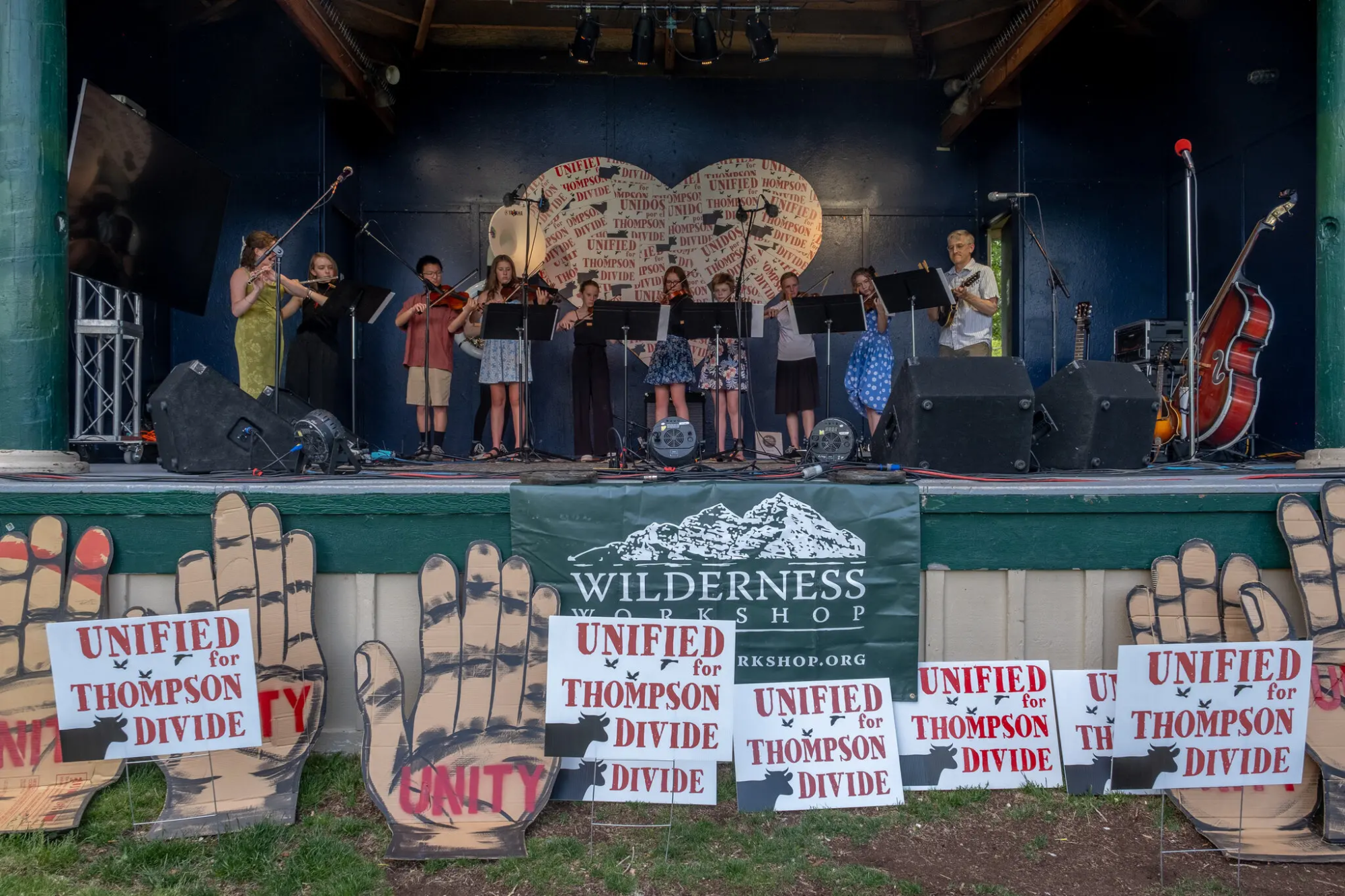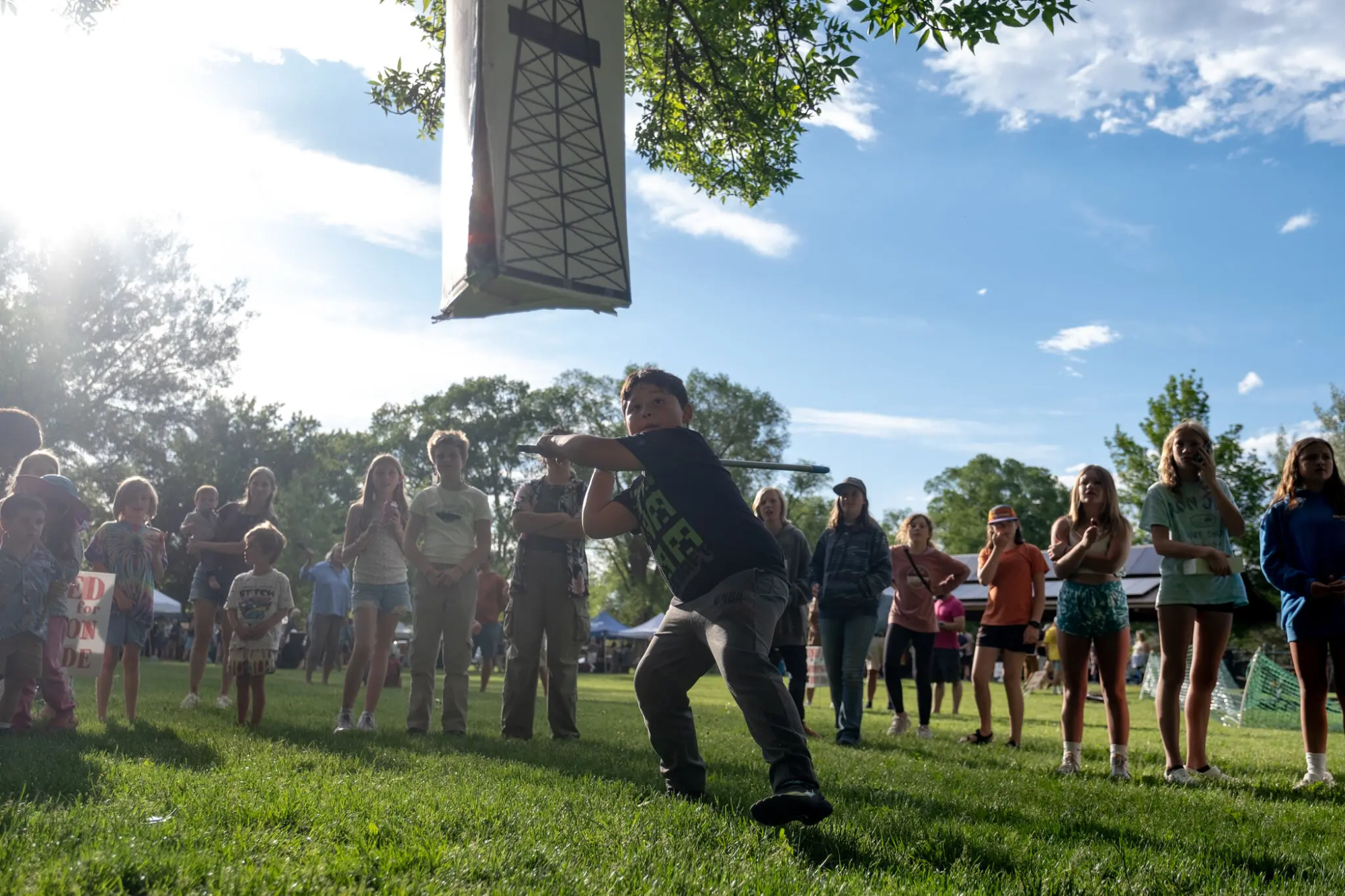
The drilling leases in a pristine corner of Colorado seemed like a done deal. But then an unlikely alliance of cowboys and environmentalists emerged. And things changed.
The members of the group — a self-described ragtag organization that included ranchers, cyclists and snowmobilers — had little in common aside from a desire to protect the expanse, almost a quarter-million acres of public land known as the Thompson Divide. But they ultimately developed a novel legal strategy that helped win a 20-year pause on new oil and gas development across the area.
That strategy could serve as a model for future conservation efforts.
“It’s an incredible story of how it all came together,” said Zane Kessler, the founding executive director of the group, the Thompson Divide Coalition.
The area, in west-central Colorado, overlaps with part of the White River National Forest, one of the most visited national forests in the United States. The Thompson Divide is also home to endangered lynxes and to one of the expansive organisms in the world: the state’s largest Aspen stand, a colony of trees connected by a lateral root system.
The Bush administration started issuing oil and gas leases in the area in the early 2000s in an effort to expand production on public lands. Roughly 80 leases were issued on the Thompson Divide, with dozens more in adjacent parcels of land.
“It happened incredibly quickly,” said Peter Hart, who led the coalition’s legal team. “And it happened at a time when it was the beginning of people developing skills and knowledge to engage in these processes and actually push back.”

Mr. Hart grew up in the Eagle Valley, a stretch of Western Colorado that’s split by Interstate 70 and striated with ski runs around resorts like Vail or Beaver Creek, and he had always been aware of the conflicting interests that push and pull at Colorado’s landscape: development and conservation.
He spent much of his youth exploring the backcountry hiking and skiing, eventually returning to the area as a ski instructor after college. But the satisfaction from his role guiding visitors down blue runs and from a few entry-level conservation jobs eventually faded, so he packed his bags for law school at the University of Denver.
After graduation, he went to work for the Wilderness Workshop, a nonprofit watchdog group based in Carbondale, Colo.
Around the same time the Bush administration was expanding access to public lands, and hydraulic fracturing technology was making drilling cheaper and easier in places where it previously would have been impractical.
The result was a drilling boom in Colorado, and Mr. Hart was assigned to a problem that had worried the Wilderness Workshop team for years: how to protect the Thompson Divide.
An earlier effort by conservationists to secure federal protection for lands in the area had failed, partly because of local opposition from snowmobilers and cyclists who wanted to continue to use the area, and partly because of existing drilling leases.
But Mr. Hart and his colleagues sensed broad opposition to oil and gas development in the area from a diverse range of interest groups, including farmers who wanted to protect grazing land and conservationists concerned about preserving pristine forests and alpine meadows.
With that in mind, they set out in search of a new legal approach.
“We needed to do something different” said Sloan Shoemaker, the founding executive director of the Wilderness Workshop. “How do we get all these different stakeholders involved?”
While Mr. Hart spent long work days poring over legal documents and researching potential legal strategies to protect the Divide, he would use almost every hour of free time exploring the area.
“I spent a lot of time in Thompson and got to know and love the place,” he said.
He wasn’t alone in his love of the area. In 2012, when the Thompson Divide Coalition was coming together, the group brought Mr. Hart aboard to take charge of legal strategy.
The coalition gained momentum, appearing at public meetings to provide comments and even staging an impromptu tractor parade down Main Street in Carbondale. “There was lots of local opposition and fear,” Mr. Hart said. “And in that fear was an opportunity for us to unify against what everybody perceived as the greatest threat to this landscape.”

Mr. Hart and others tried a strategy of buying back leases, but most leaseholders declined. “Their initial response was, ‘We’re glad that you sent us the offer, but let’s get real,’” Mr. Hart said. “‘We really think we’re sitting on billions of dollars of gas.’”
But, in examining the leases for possible purchase, Mr. Hart and colleagues at the Wilderness Workshop, working with the Thompson Divide Coalition, realized that the federal government’s haste to issue leases had left them with vulnerabilities.
“Peter was instrumental in helping us understand that the existing leases suffered from a number of legal deficiencies,” Mr. Kessler said. “And so we really focused our efforts there, and that’s where a more coordinated advocacy effort began.”
For one thing, opportunities for public comment during the leasing process appeared to be inadequate, an apparent violation of the National Environmental Policy Act.
The technology that had driven the oil and gas boom, fracking, was also a source of weakness in the leases. According to Mr. Hart and his team, the administration had failed to properly analyze and account for the technology in the required environmental review process.
Legal questions about the leases led to administrative challenges, which eventually sent one leaseholder to federal court against the Bureau of Land Management.
Initially, conservationists had intended to sue the government, contending that some of the leases were invalid because of noncompliance with the National Environmental Policy Act. But the work that exposed the legal and administrative problems with the leases had effectively flipped the script: The leaseholders who had declined to sell were now eyeing the exits in light of potential legal complications and public discontent around drilling.


In early 2023, when the Bureau of Land Management eventually opened up comments on the leasing program, more than 65,000 people submitted statements of support for stronger environmental protections.
Then, in April this year, the Biden administration announced the 20-year pause on new oil and gas development, with the goal of giving Congress time to pass legislation that would permanently protect the area.
Mr. Hart said he believed his group’s work had actually influenced government policy. “I don’t think those changes would have happened had it not been for the work of local communities and concerned citizens in places like the Thompson Divide,” he said.
While Mr. Hart is proud of his work with the Wilderness Workshop and the Thompson Divide Coalition, he remains steadfast in his commitment to group effort.
“This campaign has done an extraordinary amount of good to right-size the value of public lands, the value of environmental values like historic cultural values on public lands that weren’t getting adequate consideration in the old paradigm,” he said.